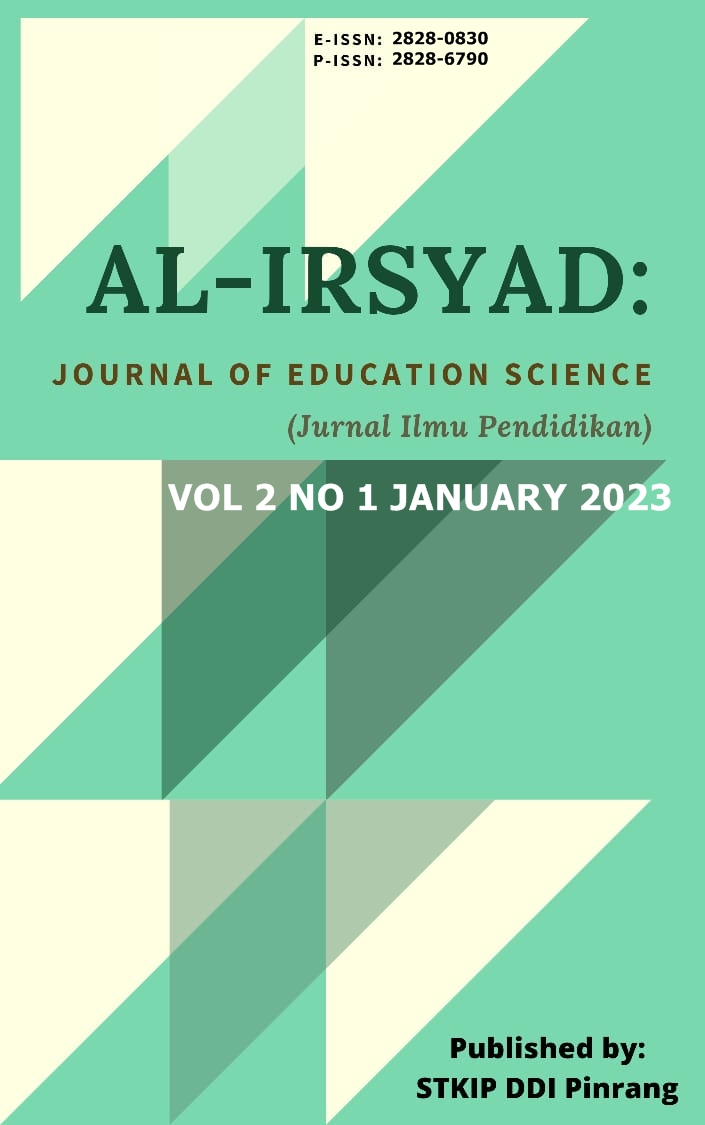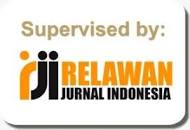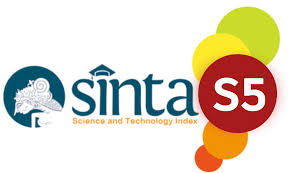USE OF POWERPOINT APPLICATIONS IN LEARNING ISLAMIC RELIGIOUS EDUCATION IN INCREASING STUDENT LEARNING MOTIVATION
DOI:
https://doi.org/10.58917/aijes.v2i1.38Kata Kunci:
Learning Motivation, PowerPoint, Learning MediaAbstrak
The nature of the training or the nature of teaching is influenced by several elements considering the impact of the level of learning on the school. One of the characteristics of the nature of learning can affect student achievement. The use of media in learning exercises can present a very beautiful learning atmosphere and can be used to increase the enthusiasm and inspiration of students' learning in utilizing the power point application media. This study aims to determine the focus of the use of power in learning Islamic Religious Education (PAI) and to increase student inspiration at SMP IT Wildan Mamuju. The type of research used is Classroom Action Research (CAR). This exploration area is located at SMP IT Wildan Mamuju with 10 students from class IX as the subject. The instrument used is a perception sheet that is linked to learning inspiration and a perception sheet about the application of control points. Then, the logical procedure used in this exploratory research is the strategy of examining observational information related to learning inspiration. From the consequences of the exams that have been described, it tends to be reasonable that the level of inspiration for the learning of class IX students towards PAI subjects has developed fundamentally from one cycle to another through the use of style points in developing experiences. The use of the power point application can increase the enthusiasm and learning inspiration for class IX students of SMP IT Wildan Mamuju.
Referensi
Adiko, H. S. S. (2019). Use Media Learning Based on ICT (Information Communications Technologies) in Increase Motivation Study Participants Educate. academic , 7 (2), 67–76.
Ahmad, A. K., Ishak, & Afdalia. (2022). Peningkatan Hasil Belajar Matematika melalui Model Pembelajaran Kooperatif Tipe Two Stay Two Stray. Al-Irsyad Journal of Mathematics Education, 1(2), 79–87. Diambil dari https://ejurnal.stkipddipinrang.ac.id/index.php/wjme/article/view/23
Arjuna, MA, Alwi, MI, & Setiawan, HR (2021). Application Utilization Power Point in Learning Education Religion Islam in Increasing Students' Learning Motivation at SMP PAB 1 Klumpang. Maslahah: Journal of Community Service , 2 (1), 10–16.
Arsyad. (2013). Media Learning . Jakarta; King GrafindoPersada.
Ermawati, E., Nurchalis, N. F., & Sardi, A. (2021). Online EFL Teaching and Learning: Different skills, Different Challenges. IDEAS: Journal on English Language Teaching and Learning, Linguistics and Literature, 9(1).
Ishmael. (2013). Curriculum 2013: Education Religion Islam and Budi Character (Learning Tool Development Framework) . Jakarta: Study team textbook PAI lessons and Character curriculum.
Keller, J. M. (2016). motivation, learning, And Technology: Applying The ARCS-V Motivation Model. Participatory Educational Research , 3 (2), 1– 13.
Khadija, S. (2014). Motivation study . UIN Sharif Hidayatullah.
Munir. (2012). Multimedia Concepts and Applications in Education . Bandung: Alphabet.
Rohendi, T., Syarbini, A., & Asmawati, L. (2016). Effect of Media Use Power point and Motivation Study To Results Study Student. Jtppm (Journal Technology Education And Learning): Edutech And Instructional Research Journal , 3 (1).
Sardi, A., Haryanto, A., & Weda, S. (2017). The Distinct types of diction used by the efl teachers in the classroom interaction. International Journal Of Science and Research (IJSR), 6(3), 1061-1066.
Sardi, A., JN, M. F., Walid, A., & Ahmad, A. K. (2022). An Analysis Of Difficulties In Online English Learning Experienced By The Efl Teacher. Inspiring: English Education Journal, 5(2), 144-154.
Sardi, A., & Mujahidah, M. (2020). Could I Be Illogical?(Cibi Guide) For Non-Native Speaker.
Sardi, A., Surahmat, Z., & Nur, S. (2022). The Washback of Intensive TOEFL Training Program (ITTP) on Student’s Learning Motivation. ELS Journal on Interdisciplinary Studies in Humanities, 5(4), 593-597. https://doi.org/10.34050/elsjish.v5i4.24570
Tseng, H., & Walsh, E. J. (2016). Blended vs. Traditional Course Delivery: Comparing students' motivation, Learning outcomes, and Preferences. Quarterly Review of Distance Education , 17 (1).
Widiasworo, E. (2015). 19 Tips Awaken Motivation Study Participant Educate . Yogyakarta: Ar-Ruzz Media.
Unduhan
Diterbitkan
Cara Mengutip
Terbitan
Bagian
Lisensi
Hak Cipta (c) 2023 Ahdar Ahdar, A. Fitri Nurhidayat, Musyarif Musyarif

Artikel ini berlisensi Creative Commons Attribution 4.0 International License.























